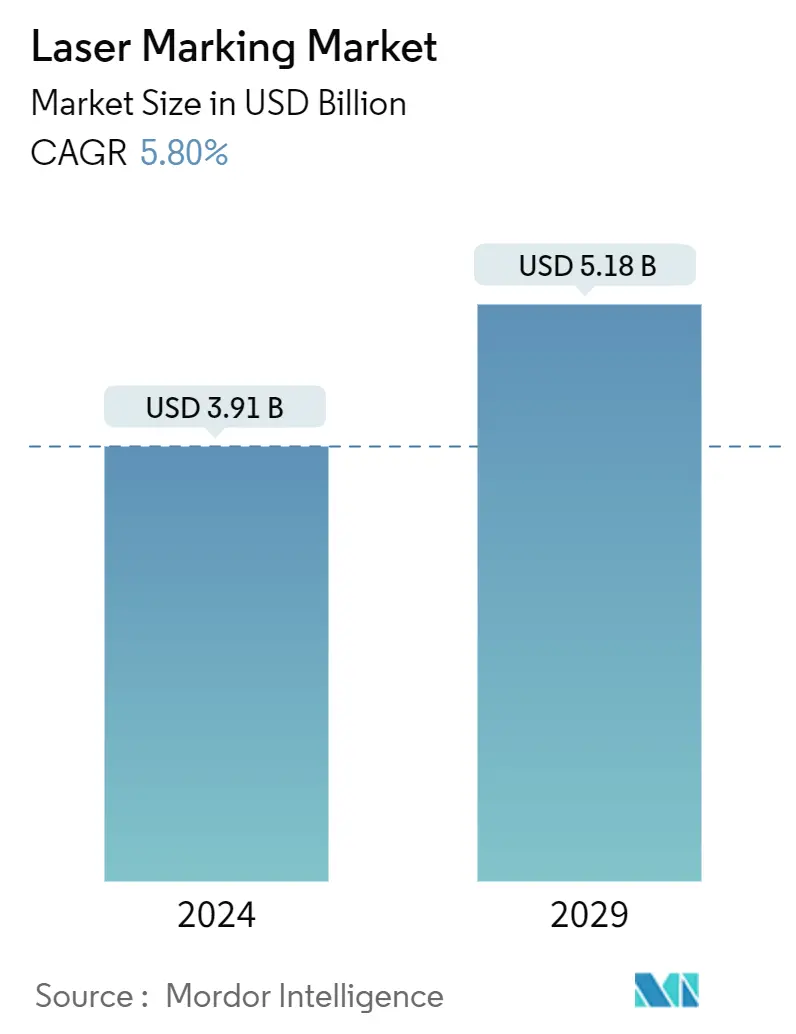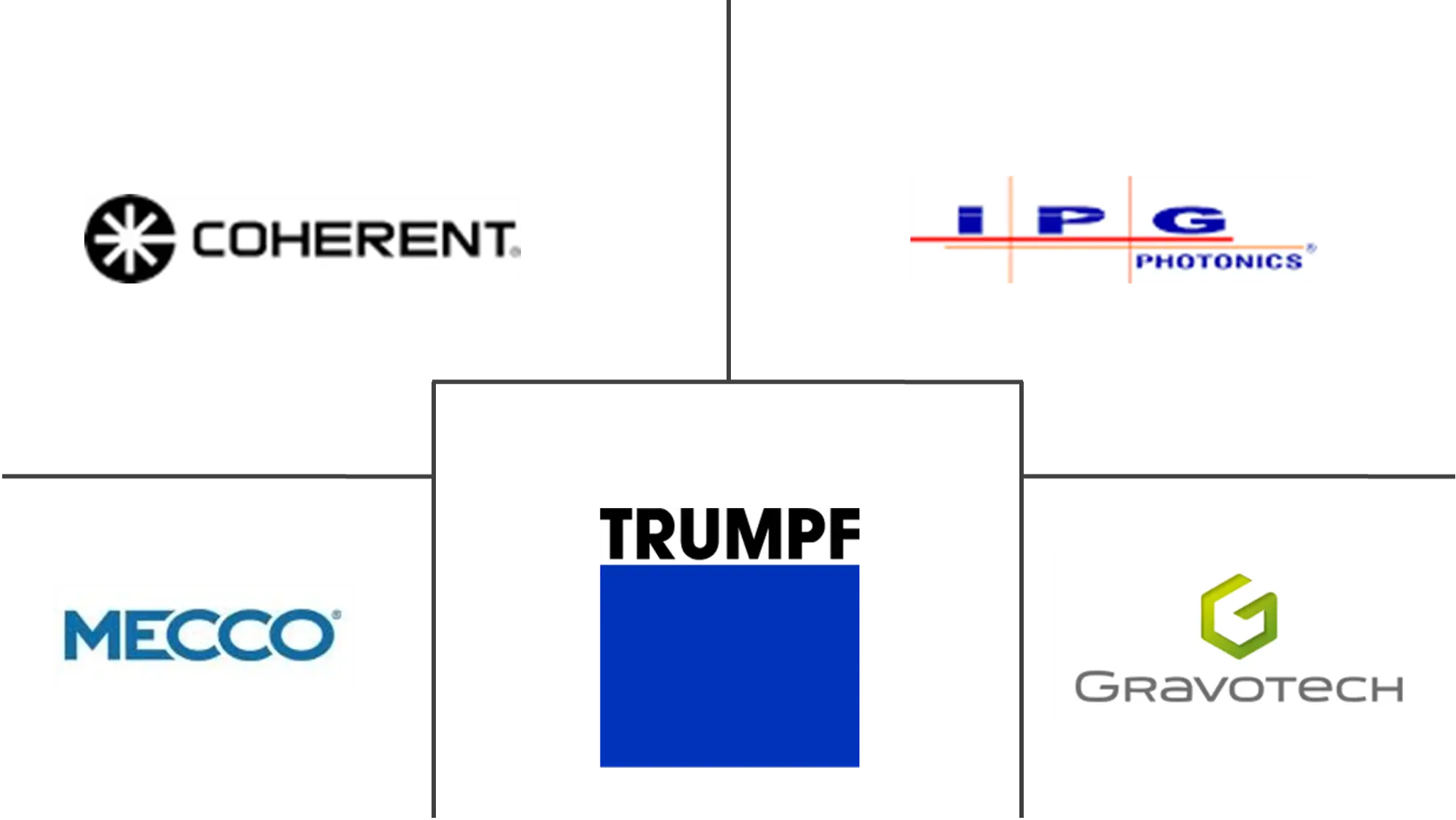Market Size of Laser Marking Industry

| Study Period | 2019-2029 |
| Market Size (2024) | USD 3.91 Billion |
| Market Size (2029) | USD 5.18 Billion |
| CAGR (2024 - 2029) | 5.80 % |
| Fastest Growing Market | Asia Pacific |
| Largest Market | North America |
Major Players
*Disclaimer: Major Players sorted in no particular order |
Need a report that reflects how COVID-19 has impacted this market and its growth?
Laser Marking Market Analysis
The Laser Marking Market size is estimated at USD 3.91 billion in 2024, and is expected to reach USD 5.18 billion by 2029, growing at a CAGR of 5.80% during the forecast period (2024-2029).
Laser marking is frequently utilized to enhance traceability, quality control, and process improvement in equipment manufacturing. By assigning an identification to each component at the beginning of the production line, barcode readers may track parts at every manufacturing stage.
- Traditional laser markers and integrated machines have typically been restricted to a flat planar field of view, which may be adjusted for inclined planes or cylindrical surfaces by rotating and moving the object during marking. However, as manufacturing has evolved to include more complex-shaped characters, laser markers have been integrated into programmed robotics or advanced 5-axis machines.
- Laser marking is an incredibly versatile technology used across various industries. It can create permanent marks on multiple surfaces through laser etching, engraving, or annealing. This remarkable technology is applied in healthcare and pharmaceuticals, automotive, electronics, machine tools, and packaging sectors.
- The market is influenced by the expanding usage in different industries and the rise in investment in research and development, which results in improved functionality of laser markers. Laser marking is frequently employed to aid in traceability, quality control, and process enhancement during the manufacturing process of equipment. Continuing research and innovation will be crucial in developing laser marking processes that are environmentally responsible, guaranteeing both operational excellence and ecological integrity. This will pave the way for sustainable market growth. The key to remaining competitive in the market is increasing investment in research and development and creating innovative products.
- The high initial investment can challenge small businesses or startups operating on limited budgets. Laser marking machines can entail a notable upfront expense, which can differ based on factors such as laser placement, power needs, marking area size, and additional functionalities. Consequently, the elevated initial cost may impede the expansion of the market.
- Various macroeconomic factors, including COVID-19, adversely impacted the global laser marking market. The strict lockdown measures implemented worldwide caused disruptions in the supply chain. Leading manufacturing countries like the United States, Germany, the United Kingdom, and China, which previously showed significant demand for equipment and machinery, were heavily affected by the pandemic, leading to a suspension in the market for such products. The manufacturing sector in the United States thrived because companies allowed nonessential employees to work remotely as part of their virus containment measures. China faced a slowdown in growth, while Asian markets paused, and the Western market, which the government had targeted in their recent five-year plan, struggled with a resurgence of the pandemic.
